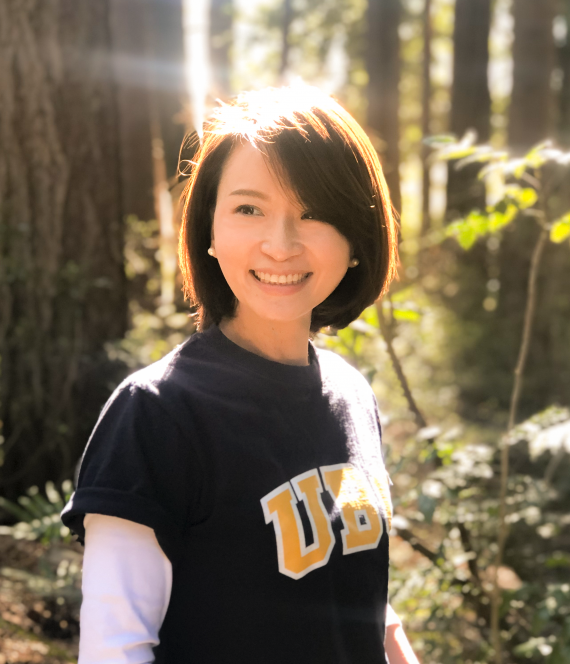

As universities around the world moved online in March 2020, UBC faculty were suddenly faced with the enormous task of rethinking and developing their courses for an online environment — a challenge they’re still facing as online teaching continues.
We spoke to Arts faculty members Kim Snowden, Michael Griffin and Hsiang-ning Sunnie Wang about how they’re adapting their courses for remote teaching and the steps they’re taking to support students. You can also read their advice to students for getting the most out of learning online.
Kim Snowden
Assistant Professor of Teaching, Feminist Media Studies and Popular Culture


How are you adapting your courses for an online environment?
As I rely a lot on in-person collaboration and discussion in my classes, this has been the primary challenge for adapting my courses — I have had to think differently about my pedagogy and not just see this as a different format for the same kind of teaching, but to really think about how to engage students using the virtual platforms and shifting what and how I teach.
Part of this is rethinking how students might meet the learning objectives in the course without everything being high stakes and stressful. I’ve tried to cut down my readings, focus on areas like media, think about ways to engage that are low bandwidth, think differently about what participation might look like, and have a variety of options for participating, including text-based chats and discussions. Some aspects of my courses simply don’t work in an online format and so I have had to let them go, even if they are things that I love to teach or activities that work well in the classroom — and that was hard at first. It’s been interesting to rethink my courses and teaching in this way and I’m learning a lot about accessibility and engagement.
“I've had to think differently about my pedagogy and not just see this as a different format for the same kind of teaching.”
Since term started in September, I’ve observed that students need a clear framework for how to participate if we are not in the classroom — otherwise they feel obligated to comment on everything and end up feeling overwhelmed with daily, small assignments.
It’s been interesting to rethink my courses and teaching in this way and I’m learning a lot about accessibility and engagement that I will incorporate into my in-person lectures when we return to the classroom.
What are you doing to support students in your classes?
In March and April, it was about being flexible, reweighing assignments, recognizing that everyone was struggling and offering options to ease the stress where I could. And it was also about making space to talk about all this — informal opportunities to come together and chat — I did this through email, through Canvas chat, through zoom, and through social media.
Wellness has always been central in my courses and much more so now — making sure students have access to resources and support on Campus. But also making sure that students who are away from campus don’t feel isolated and alone. And, it’s key for me to listen to what students want and to be flexible. I encourage them to connect to each other through social media, to set up chats, to spend time responding to each other on discussion boards.
I also make sure to let them know what events or lectures or other virtual things are happening so that they can participate. For example, this year, I’m encouraging students in my literature class to attend virtual literary events together. In some ways, being online has generated different opportunities for these kinds of activities.
It’s key for me to be present and available — even when students are working on asynchronous aspects of the course — to still build community and support in virtual settings. I do a Weekly Round-Up and Check-In every Friday where I remind them of anything they might have missed that week, any upcoming deadlines, and a look ahead to the next module. I include a very short video with a wellness tip or campus resource or something fun like a book or film recommendation. I do this partly for myself — it helps me to feel connected in a personal way and also — hopefully — reminds them that I’m here if they need support or help.
Michael Griffin
Associate Professor, Department of Philosophy


Are you trying anything new in your online courses this fall?
Definitely. I’ve redesigned some of my courses to be less linear, to adapt to the more asynchronous model of students exploring and learning on their own time, and pursuing their own interests in small “pods.” For example, one of my classes is a survey of ancient Greek philosophy.
“Many of us will also be learning as we go, I think, about how to curate a wholesome, respectful and welcoming space for learning and discussion that’s solely online.”
Usually, we’ve marched through the “story” in a linear way. While I’m keeping a sense of core topics for each weeks, I’m also trying to build more of an open-ended “map” this term, so you can supplement your time in the course in any order, based on what interests you: some philosophical mythology this week, some proto-scientific stuff next week, some ethics after that, or vice versa.
What have you found to be the most effective ways of building a sense of community among students who can’t meet face to face?
I think starting small really helps: so, in a larger class over 100, trying to cultivate smaller “pods” of community where folks can really get to know each other a little better, and team up on problem solving. Trying to reach a more human scale. Also, trying to welcome and illustrate the value of different interests and ways of knowing in a class.
Many of us will also be learning as we go, I think, about how to curate a wholesome, respectful and welcoming space for learning and discussion that’s solely online. I think the whole community of every class will be working together to make communicating online a friendly experience — these are often lonely and isolating times, and it would be amazing if at least some classes can feel like something to look forward to, a place to have interesting conversations and be genuinely connected with peers.
Hsiang-ning Sunnie Wang
Assistant Professor of Teaching, Chinese Applied Linguistics


How are you adapting your courses for an online environment?
From when classes were first moved online in March, my colleagues at the Chinese Language Program and I have attended over thirty online workshops and talks within UBC and beyond to learn how to effectively adapt our courses for online learning. We put in a lot of effort and learned a lot over the summer. The move online has reinforced my belief that learning is a life-long process or, as we say in Mandarin, 学无止尽. This belief is one of the reasons I love being a teacher and is something I always try to instill in my students.
In April, we surveyed our students about their online learning experience to get their feedback, and we’ve rethought and adapted our course designs in order to maximize students’ language output and learning. Our students are spread across the world in many time zones, so we’ve decided to use a flipped course format with asynchronous and synchronous content to be as inclusive as possible of everyone’s learning needs. For example, our instructors have been creating helpful and interactive grammar videos (one video examples — credits go to Li-jung Lee) to help students with their self-learning. This way, our students can go at their own pace, with more time flexibility.
We’re also trying to eliminate the Powerpoint lectures and spend most of the time doing interactive activities that students find more engaging and meaningful. In that vein, we’ve also decided to move away from traditional testing and use an e-portfolio, where students can see their progress throughout the course.
What have you found to be the most effective ways of building a sense of community among students who can’t meet face to face?
Everything we’re doing is designed to build an online learning community — to me, the course environment is just as vital as the course content. Besides adapting the course as a whole, we’re increasing TA support, creating opportunities for students to study together in online “happy hour” sessions, and providing diverse interactive activities to encourage engagement and give students more opportunities to practice their language skills. We’re additionally holding virtual oral practice sessions, where students can best practice their speaking skills with native Chinese speakers, an essential part of any language learning program.
“We have to rethink what we define as learning, particularly active learning.”
Also, in my class, I encourage students to find out what they have in common and recognize the differences that make us a strong and inclusive community with diversity. As instructors, we want to be positive and energetic when interacting with students to create a great learning environment full of positive vibes and where students can feel comfortable coming to us when they need help. Building a close-knit learning community both in the classroom and beyond is one of our top priorities!
In order to build a close community, I prepared plenty of ice breaking activities for daily classes and almost feel like I’m working at the YMCA again! I believe that we are not going to have a closed group, but a close group!
Find out more about teaching and learning support offered through Arts ISIT and UBC.


